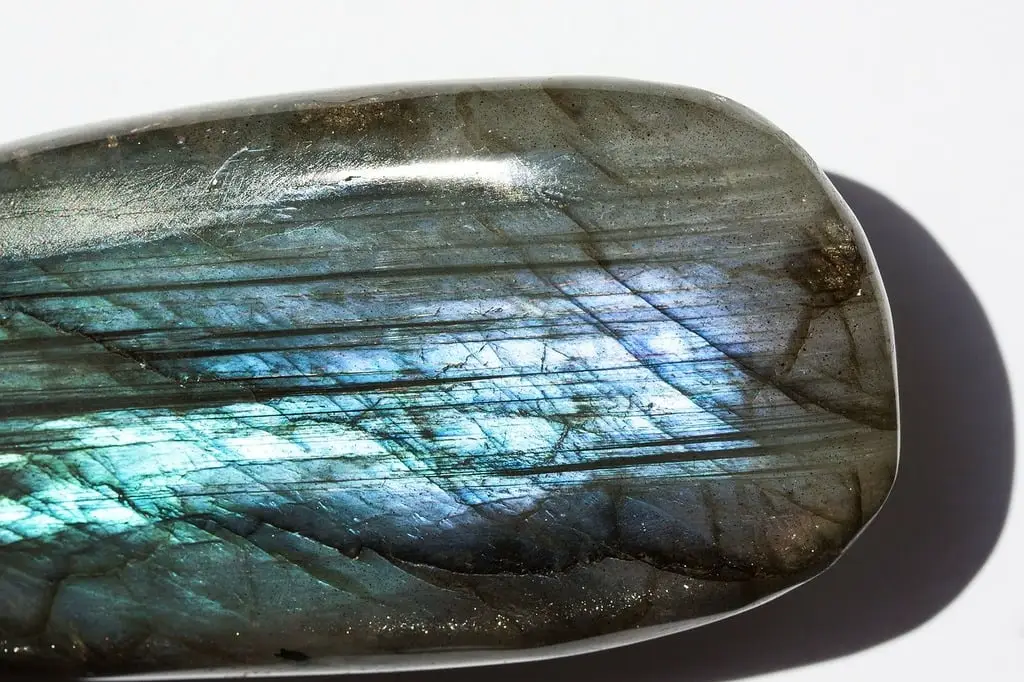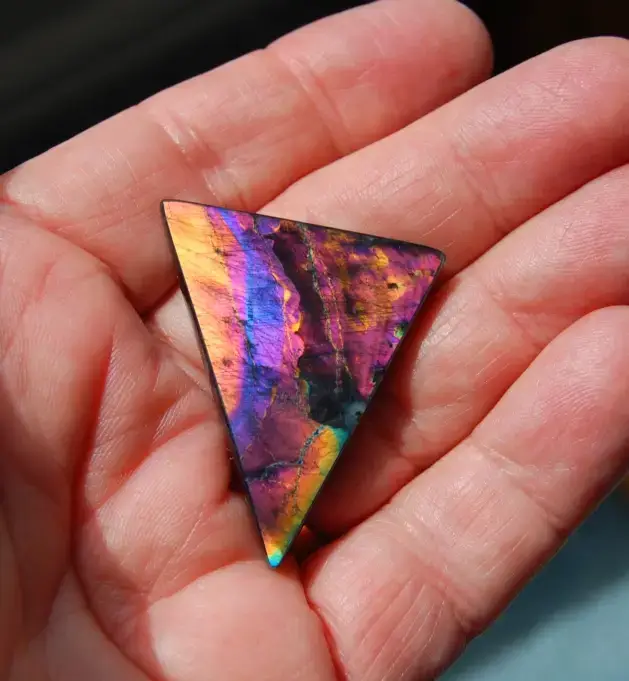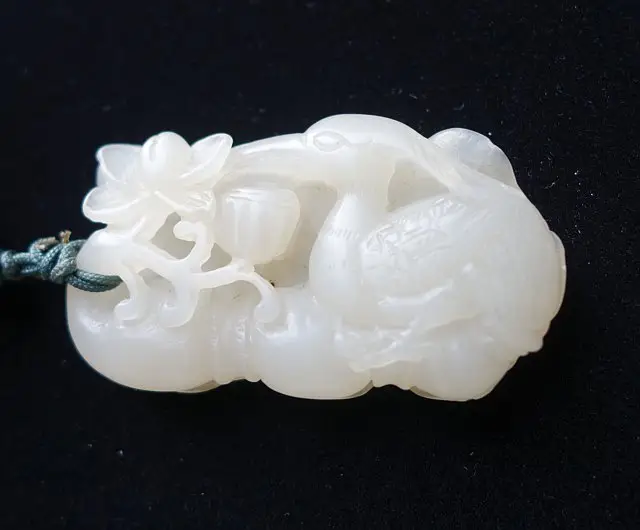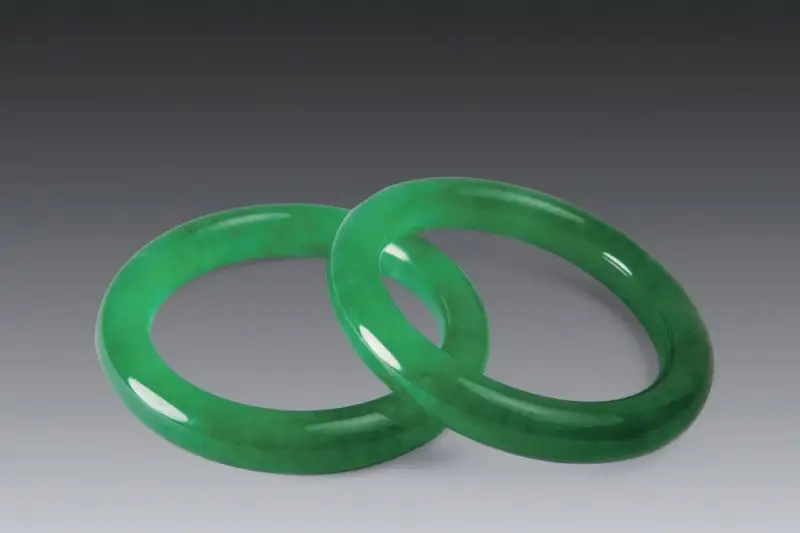Labradorite
Its English name is derived from the Labrador region in Canada, where it was first discovered in 1770. In Chinese, it is sometimes referred to as “Labrador Stone”.
Labradorite belongs to the plagioclase group within the feldspar family of minerals, specifically known as calcium-sodium plagioclase. It is typically composed of 30-50% albite and 50-70% anorthite molecules. The stone’s unique labradorescence comes from the presence of multiple metallic crystal elements inside. The interference of light, caused by its fine parallel twinning, creates the stunning play of colors on specific crystal planes. Labradorite that exhibits a full spectrum of colors is referred to as “Spectrolite,” which will be discussed further later in the article. Generally, labradorite appears in shades ranging from gray, brown to black, while gemstone-grade labradorite displays iridescent hues of red, yellow, blue, green, and others.

(Figure 1) 1
Labradorite
- Crystal system: triclinic crystal system
- Hardness: 6~6.5
- Specific gravity: 2.7
- Luster: Vitreous luster
- Transparency: Transparent to translucent
- Color: None, yellow, brown, light to dark gray
- Index of refraction: 1.559~1.568
- Birefringence: 0.008~0.009
- Fluorescence: None.
- Cleavage: complete cleavage
- Characteristics: Speckled spectral colors
- Imitations: Rare imitations
Labradorite in Finland——Spectrolite

Spectrolite is a type of labradorite found only in Finland. Its distinguishing feature is its vivid coloration, with a visible full spectrum of colors appearing on specific polished surfaces. The boundaries between the color bands are sharper compared to regular labradorite, which led to its special designation. Although spectrolite is a variety of labradorite, their colors, appearance, and value differ significantly.
- Color and Appearance: Spectrolite has a darker, almost black base, and it reflects more vibrant colors with sharper boundaries between them. In contrast, labradorite ranges from transparent to gray, and its color transitions tend to be more gradual or blurry.
- Value: Both stones are considered semi-precious, but due to its rarity and more vibrant appearance, spectrolite is generally more valuable than labradorite.
Originally, the term “spectrolite” was used exclusively for the colorful labradorite from Finland. However, in recent years, the jewelry market has expanded this term to include labradorite from other regions that display multiple colors.
Commercial Value of Labradorite
Ornamental
Imitations: Labradorite itself has very few imitations. However, there is a type of syenite rock with a similar iridescent effect to labradorite, which is sometimes ground into jewelry pieces to mimic labradorite. These imitations tend to have more impurities, lower transparency, and a darker color, and their overall quality is inferior to gemstone-grade labradorite.
Rarity: While labradorite is not rare, high-quality labradorite with a brilliant spectral effect—known as spectrolite—is both rare and valuable. The spectral effect is dependent on the unique arrangement of the crystal structure, which is uncommon in nature. Additionally, factors like the location and difficulty of extraction contribute to spectrolite’s rarity, making it a distinctive and precious gemstone.
Selection Tips: When choosing labradorite, look for stones with a beautiful and extensive display of iridescence. Due to its well-developed cleavage, labradorite is prone to breakage, so protective settings like bezel settings are recommended to prevent damage.
Other feldspar groups:
A sparkling gemstone – Sunstone
A gemstone that radiates moonlight — Moonstone
A gemstone with mysterious river-colored — Amazonite
Follow Honway to learn more about the characteristics of gemstones~
Photo Credit:


